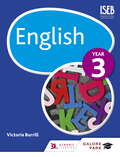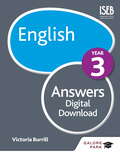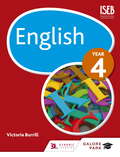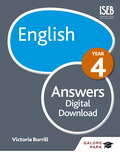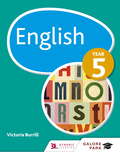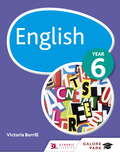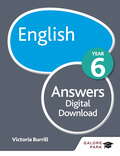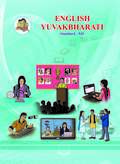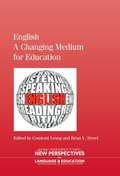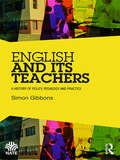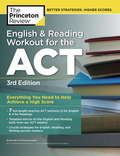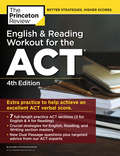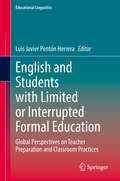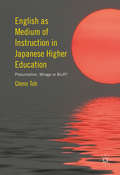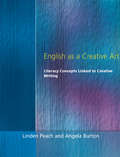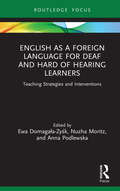- Table View
- List View
English Year 3
by Victoria BurrillExam Board: Non-SpecificLevel: KS2Subject: EnglishFirst Teaching: September 2015First Exam: June 2018It fulfils the requirements of both the ISEB English Syllabus and the National Curriculum, covering the full range of comprehension and composition skills and providing pupils with opportunities to practice their speaking and listening skills.· Adopts a skills-based approach to teaching English from Year 3 to 6· Delivers a coherent scheme with the progressive development of skills throughout· ISEB-endorsed, with rigorous content to stretch and challenge the most able
English Year 3 Answers
by Victoria Burrill- Endorsed by Independent School Examination Board (ISEB)- Links to the National Curriculum and ISEB curriculum are referenced in each chapter- Answer guidance encourages independent learning and a greater understanding of the English language- Enables efficient assessment of pupils' strengths and weaknessesPlease note that as a PDF download, this product is non-refundable.
English Year 3 Answers
by Victoria Burrill- Endorsed by Independent School Examination Board (ISEB)- Links to the National Curriculum and ISEB curriculum are referenced in each chapter- Answer guidance encourages independent learning and a greater understanding of the English language- Enables efficient assessment of pupils' strengths and weaknessesPlease note that as a PDF download, this product is non-refundable.
English Year 4
by Victoria Burrill- Endorsed by Independent School Examination Board (ISEB)- A coherent scheme with the progressive development of skills throughout- Each chapter introduces and covers a skill, providing approximately three weeks of teaching material- Scaffolded activities give pupils the opportunity to practise new skills- Challenging comprehension activities across SPAG, writing, speaking and listening activities are included with mark allocation- 'Joining the dots' segments to group and apply skills previously learned- Emphasis on spelling, grammar and writing skills to develop written accuracyThis book is supported by answers as a PDF download: English Year 4 Answers (9781471896613)
English Year 4
by Victoria BurrillExam Board: Non-SpecificLevel: KS2Subject: EnglishFirst Teaching: September 2015First Exam: June 2018- Endorsed by Independent School Examination Board (ISEB)- A coherent scheme with the progressive development of skills throughout- Each chapter introduces and covers a skill, providing approximately three weeks of teaching material- Scaffolded activities give pupils the opportunity to practise new skills- Challenging comprehension activities across SPAG, writing, speaking and listening activities are included with mark allocation- 'Joining the dots' segments to group and apply skills previously learned- Emphasis on spelling, grammar and writing skills to develop written accuracyThis book is supported by answers as a PDF download: English Year 4 Answers (9781471896613)
English Year 4 Answers
by Victoria Burrill- Endorsed by Independent School Examination Board (ISEB)- Links to the National Curriculum and ISEB curriculum are referenced in each chapter- Answer guidance encourages independent learning and a greater understanding of the English language- Enables efficient assessment of pupils' strengths and weaknessesPlease note that as a PDF download, this product is non-refundable.
English Year 5
by Victoria BurrillExam Board: Non-SpecificLevel: KS2Subject: EnglishFirst Teaching: September 2015First Exam: June 2018- Endorsed by Independent School Examination Board (ISEB)- A coherent scheme with the progressive development of skills throughout- Each chapter introduces and covers a skill, providing approximately three weeks of teaching material- Scaffolded activities give pupils the opportunity to practise new skills- Challenging comprehension activities across SPAG, writing, speaking and listening activities are included with mark allocation- 'joining the dots' segments to group and apply skills previously learned- Emphasis on spelling, grammar and writing skills to develop written accuracyThis book is supported by answers as a PDF download: English Year 5 Answers PDF (9781471889264)
English Year 5 Answers
by Victoria Burrill- Endorsed by Independent School Examination Board (ISEB)- Links to the National Curriculum and ISEB curriculum are referenced in each chapter- Answer guidance encourages independent learning and a greater understanding of the English language- Enables efficient assessment of pupils' strengths and weaknessesPlease note that as a PDF download, this product is non-refundable.
English Year 6
by Victoria BurrillExam Board: Non-SpecificLevel: KS2Subject: EnglishFirst Teaching: September 2015First Exam: June 2018Endorsed by Independent School Examination Board (ISEB)A coherent scheme with the progressive development of skills throughout- Each chapter introduces and covers a skill, providing approximately three weeks of teaching material- Scaffolded activities give pupils the opportunity to practise new skills- Challenging comprehension activities across SPAG, writing, speaking and listening activities are included with mark allocation- 'Joining the dots' segments to group and apply skills previously learned- Emphasis on spelling, grammar and writing skills to develop written accuracyThis book is supported by answers as a PDF download: English Year 6 Answers, 9781471867149
English Year 6
by Victoria BurrillExam Board: Non-SpecificLevel: KS2Subject: EnglishFirst Teaching: September 2015First Exam: June 2018Endorsed by Independent School Examination Board (ISEB)A coherent scheme with the progressive development of skills throughout- Each chapter introduces and covers a skill, providing approximately three weeks of teaching material- Scaffolded activities give pupils the opportunity to practise new skills- Challenging comprehension activities across SPAG, writing, speaking and listening activities are included with mark allocation- 'Joining the dots' segments to group and apply skills previously learned- Emphasis on spelling, grammar and writing skills to develop written accuracyThis book is supported by answers as a PDF download: English Year 6 Answers, 9781471867149
English Year 6 Answers
by Victoria Burrill- Endorsed by Independent School Examination Board (ISEB)- Links to the National Curriculum and ISEB curriculum are referenced in each chapter- Answer guidance encourages independent learning and a greater understanding of the English language- Enables efficient assessment of pupils' strengths and weaknessesPlease note that as a PDF download, this product is non-refundable.
English Yuvakbharati Digest class 11 - Maharashtra Board Guide Book
by Shri NavneetThe book Navneet English Yuvakbharti Digest Std 11th is in Marathi version. Author of the book is Navneet Publications (India) Limited and the publisher of the book is Navneet Publications (India) Limited. The book is divided into six sections i.e., language study, textual passages, poetry, non-textual passages, writing skills and skill development. Responding to the need of the students the book has answers to all the questions/ activities in the text book and it gives a clear idea of the new activity sheet. Board’s March 2019 Activity Sheet is also given at the end of the book for practice and reference.
English Yuvakbharati class 11 - Maharashtra Board
by Maharashtra State Bureau of Textbook Production and Curriculum ResearchEnglish Yuvakbharati text book for class 11 standard from Maharashtra State Bureau of Textbook Production and Curriculum Research, Pune in English.
English Yuvakbharati class 12 - Maharashtra Board
by Maharashtra State Bureau of Textbook Production and Curriculum Research PuneThis textbook caters to the needs of this techno savvy generation. Along with the intellectual pursuits you would also require the life skills to negotiate through this complex world. The skills of English language learning would prove to be a catalyst in fast forwarding your career objectives. The activities in the textbook would facilitate learning. Statement of Purpose, Drafting Virtual Messages and Group discussions are the new additions. The diligent selection of the prose and poems in the textbook would equip you with skills like developing your critical thinking, working in collaboration, enhancing your communication, fostering creativity, inculcating values and life skills like flexibility, humility leadership, initiative, productivity and social skills. Each of our prose and poem is a lesson of life.
English a Changing Medium for Education
by Constant Leung Brian V. StreetIn this volume a range of authors from different international contexts argue that the notion of communicative competence in English, hitherto largely referenced to metropolitan native-speaker norms, has to be expanded to take account of diverse contexts of use for a variety of purposes. It also discusses the popular belief that language and literacy should simply be regarded as a technical 'skill' which confers universal benefits and that it should be replaced with a social practice view that recognises situated variations and diversity. This volume, we believe, provides a reference point for extended research and practice in these areas that will be of interest to wide range of people engaged in language and literacy education.
English and Development
by Philip Seargeant Elizabeth J. ErlingThis book investigates the relationship between English and personal and national development, as this is both discursively promoted (particularly through language policy) and practically realized in developing societies. It addresses the effects that the increased use of English and the promotion of English-language education are having in developmental contexts, and their impact on broader educational issues, on local language ecologies and on questions of cultural identity. It investigates these issues by drawing together a series of original examinations and case studies by a range of leading scholars working in this burgeoning field. The chapters focus on a variety of contexts from around the world, and the volume as a whole surveys and critiques the positioning and influence of English as a catalyst for development in the 21st century.
English and Its Teachers: A History of Policy, Pedagogy and Practice
by Simon GibbonsEnglish and Its Teachers offers a historical overview of the development of secondary English teaching in schools over the past 50 years. Initially charting the rise of a new progressive approach in the 1960s, the book then considers the implications for the subject and its teachers of three decades of central policy intervention. Throughout, document and interview data are combined to construct a narrative that details the fascinating and, at times, turbulent history. ? The book is divided into two main parts – ‘The age of invention’ and ‘The age of intervention’. The first of these sections details how innovative English teachers and academics helped to develop a new model. The second section explores how successive governments have sought to shape English through policy. A final part draws comparisons with the teaching of the subject in other major English-speaking nations and considers what the future might hold. ? English and Its Teachers is a valuable resource for those interested in the teaching of English in secondary schools, from new entrants to the profession, to experienced teachers and academics working in the sector.
English and Literacies English and Literacies: Learning How to Make Meaning in Primary Classrooms
by Rachel Burke Robyn Ewing Siobhan O'Brien Kathy Rushton Lucy Stewart Deb BrosseukBeing literate in the twenty-first century means being an empowered receiver, user and creator of diverse text types communicated across multiple and rapidly changing modalities. English and Literacies: Learning to make meaning in primary classrooms is an accessible resource that introduces pre-service teachers to the many facets of literacies and English education for primary students. Addressing the requirements of the Australian Curriculum and the Early Years Learning Framework, English and Literacies explores how students develop oracy and literacy. Reading, viewing and writing are discussed alongside the importance of children's literature. Taking an inclusive and positive approach to teaching and learning for all students, it explores the creation of texts using spelling, grammar in context and handwriting/keyboarding skills, as well as the need for authentic assessment and reporting. Finally, the text explores the importance of literacy partnerships and how teachers can address literacy challenges across the curriculum.
English and Reading Workout for the ACT, 3rd Edition
by Princeton ReviewAce the English & Reading sections of the ACT with help from The Princeton Review!This eBook edition has been specially formatted for on-screen viewing with cross-linked questions, answers, and explanations.Are difficulties with reading comprehension or sentence structure dragging your ACT score down? If so, this is the workbook for you. Designed for students specifically looking to sharpen their verbal skills, this 3rd edition of The Princeton Review's English & Reading Workout for the ACT provides the review and practice needed for verbal mastery.Techniques That Actually Work.* A 4-Step Basic Approach to mastering complex sentence structure and punctuation questions on the English passages* Pacing strategies to help you maximize efficiency and reach your target score* Tips on confronting tricky questions using process of elimination techniquesEverything You Need to Know to Help Achieve a High Score.* A comprehensive grammar review to brush up on the basics * An expert subject review of punctuation through more sophisticated English and Reading concepts* Up-to-date information on the ACTPractice Your Way to Excellence.* 7 full-length practice ACT sections (3 for English, 4 for Reading) with detailed answer explanations* Tons of end-of-chapter drills to practice the concepts that you just covered* Step-by-step walk-throughs of key English and Reading practice problems
English and Reading Workout for the ACT, 3rd Edition
by Princeton ReviewAce the English & Reading sections of the ACT with help from The Princeton Review!This eBook edition has been specially formatted for on-screen viewing with cross-linked questions, answers, and explanations.Are difficulties with reading comprehension or sentence structure dragging your ACT score down? If so, this is the workbook for you. Designed for students specifically looking to sharpen their verbal skills, this 3rd edition of The Princeton Review's English & Reading Workout for the ACT provides the review and practice needed for verbal mastery.Techniques That Actually Work.* A 4-Step Basic Approach to mastering complex sentence structure and punctuation questions on the English passages* Pacing strategies to help you maximize efficiency and reach your target score* Tips on confronting tricky questions using process of elimination techniquesEverything You Need to Know to Help Achieve a High Score.* A comprehensive grammar review to brush up on the basics * An expert subject review of punctuation through more sophisticated English and Reading concepts* Up-to-date information on the ACTPractice Your Way to Excellence.* 7 full-length practice ACT sections (3 for English, 4 for Reading) with detailed answer explanations* Tons of end-of-chapter drills to practice the concepts that you just covered* Step-by-step walk-throughs of key English and Reading practice problems
English and Reading Workout for the ACT, 4th Edition: Extra Practice for an Excellent Score (College Test Preparation)
by The Princeton ReviewACE THE ACT WITH THE PRINCETON REVIEW. Get targeted help for the English and Reading sections of the ACT in this top-rated guidebook. Includes reviews for exam topics, section-specific strategy help, and practice tests and drills. Designed for students specifically looking for extra help with the ACT verbal sections, this 4th edition of The Princeton Review's English & Reading Workout for the ACT provides the review and practice needed for verbal mastery.Techniques That Actually Work.• A 4-step Basic Approach to mastering complex sentence structure and punctuation questions on the English passages• Pacing strategies to help you maximize efficiency and reach your target score• Tips for tackling tricky questions using process-of-elimination techniquesEverything You Need to Know to Help Achieve a High Score.• Expert subject review, from punctuation to more sophisticated English and Reading concepts• Comprehensive grammar review to brush up on the basics• New Dual Reading passages for question masteryPractice Your Way to Excellence. • 7 full-length practice ACT sections (3 for English, 4 for Reading) with detailed answer explanations• End-of-chapter drills to help cement your knowledge• Step-by-step walk-throughs of key practice problems
English and Students with Limited or Interrupted Formal Education: Global Perspectives on Teacher Preparation and Classroom Practices (Educational Linguistics #54)
by Luis Javier Pentón HerreraThis book examines students with limited or interrupted education (SLIFE) in the context of English learners and teacher preparation courses from a cultural and social lens. The book is divided into five parts. Part I frames the conversation and contributions in this edited volume; Part II provides an overview of SLIFE, Part III focuses on teacher preparation programs, Part IV discusses the challenges faced by SLIFE in K-12 learning environments and Part V examines SLIFE in adult learning environments. This book is unique in that it offers practical instructional tools to educators, thus helping to bridge theory and practice. Moreover, it retains a special focus on K-12 and adult SLIFE and has an inclusive and international perspective, which includes a novel theoretical framework to support the mental, emotional, and instructional needs of LGBTQ+ refugee students. The book is of interest to teacher educators, in-service and pre-service teachers, English literacy educators, graduate students, tutors, facilitators, instructors, and administrators working in organizations serving SLIFE in K-12 and adult learning environments.
English as Medium of Instruction in Japanese Higher Education
by Glenn TohThis book sets out to uncover and discuss the curricular, pedagogical as well as cultural-political issues relating to ideological contradictions inherent in the adoption of English as medium of instruction in Japanese education. Situating the Japanese adoption of EMI in contradicting discourses of outward globalization and inward Japaneseness, the book critiques the current trend, in which EMI merely serves as an ornamental and promotional function rather than a robust educational intervention.
English as a Creative Art: Literacy Concepts Linked to Creative Writing
by Linden Peach Angela BurtonFirst published in 1996. Routledge is an imprint of Taylor & Francis, an informa company.
English as a Foreign Language for Deaf and Hard of Hearing Learners: Teaching Strategies and Interventions (Routledge Research in Special Educational Needs)
by Ewa Domagała-Zyśk; Nuzha Moritz; Anna PodlewskaThis book outlines best practice and effective strategies for teaching English as a foreign language to D/deaf and hard of hearing (DHH) students. Written by a group of researchers and experienced practitioners, the book presents a combination of theory, hands-on experience, and insight from DHH students. The book brings together a variety of tried and tested teaching ideas primarily designed to be used for classroom work as a basis for standby lessons or to supplement courses. Placing considerable emphasis on practical strategies, it provides educators and practitioners with stimulating ideas that facilitate the emergence of fluency and communication skills. The chapters cover a wide range of interventions and strategies including early education teaching strategies, using sign -bilingualism in the classroom, enhancing oral communication, speech visualization, improving pronunciation, using films and cartoons, lip reading techniques, written support, and harnessing writing as a memory strategy. Full of practical guidance grounded in theory, the book will be a useful resource for English teachers and all those involved in the education of deaf and hard of hearing learners across the world; including researchers, student teachers, newly qualified teachers, school supervisors, and counsellors.
